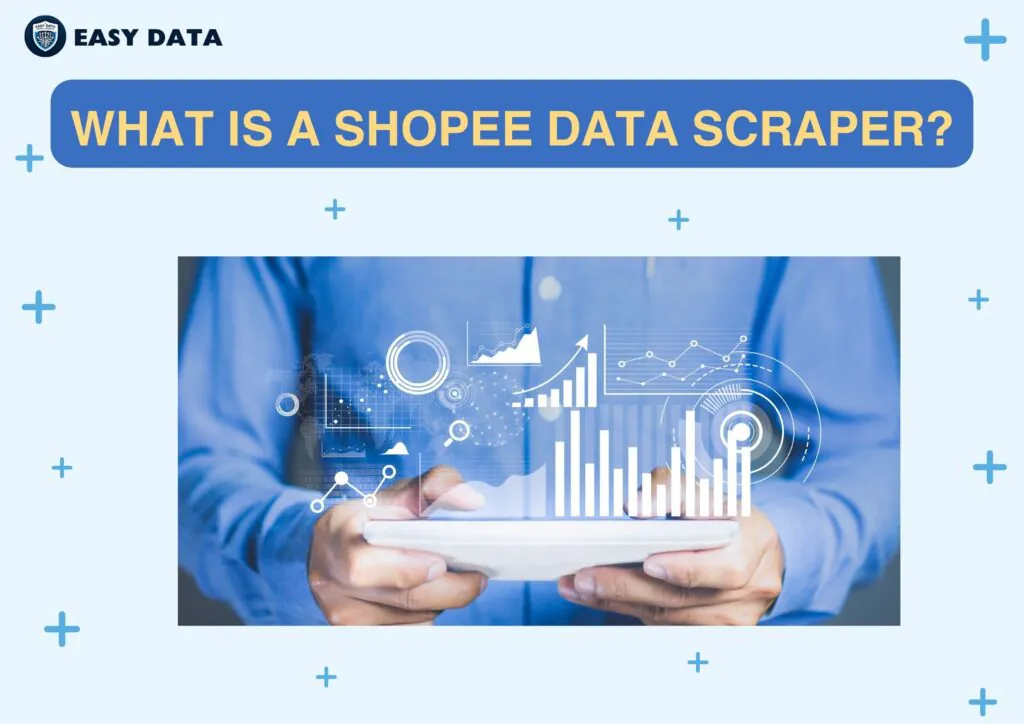In the competitive landscape of e-commerce, having access to relevant data can be a game changer. One platform that has gained immense popularity in Southeast Asia is Shopee. With its vast array of products and sellers, Shopee provides a wealth of data that can be leveraged to drive business success. However, extracting this data manually can be time-consuming and inefficient. This is where a Shopee data scraper comes into play. In this comprehensive guide, we will explore what a Shopee data scraper is, its benefits, and how to effectively utilize it for your business.
1. What is a Shopee Data Scraper?

A Shopee data scraper is a software tool designed to automatically extract data from the Shopee platform. This can include a wide variety of information, such as product listings, prices, sales volumes, customer reviews, and seller information. By automating the data collection process, businesses can gather large amounts of data quickly and efficiently, enabling them to make informed decisions based on real-time insights.
Key Features of a Shopee Data Scraper
- Automated Data Collection: Eliminates the need for manual data entry and allows for quick gathering of large datasets.
- Customizable Scraping Options: Users can specify which data fields they want to collect, such as product names, prices, seller ratings, and more.
- Real-Time Data Extraction: Provides the latest information, allowing businesses to respond swiftly to market changes.
- Data Export Options: Most scrapers offer various export formats, such as CSV, JSON, or Excel, for easy analysis.
2. Benefits of Using a Shopee Data Scraper
Using a Shopee data scraper can provide numerous advantages for your business, including:
a. Competitive Analysis
A data scraper enables you to monitor competitors’ prices, product offerings, and customer feedback. By analyzing this information, you can adjust your own strategies to stay competitive and identify gaps in the market.
b. Market Trends
Scraping data over time allows you to spot emerging trends in customer preferences and product popularity. This can guide your product development, marketing campaigns, and inventory management.
c. Customer Insights
Understanding customer sentiment through reviews and ratings can help you improve your products and services. By analyzing customer feedback, you can identify areas for improvement and enhance overall customer satisfaction.
d. Inventory Management
By tracking stock levels and pricing changes, you can make data-driven decisions about restocking, promotions, and pricing strategies. This helps you maintain optimal inventory levels and reduce the risk of stockouts.
e. Enhanced Marketing Strategies
Data scraping allows you to analyze which marketing strategies are driving sales. By understanding customer behavior and preferences, you can tailor your marketing efforts to better target your audience.
f. Time and Cost Efficiency
Automating data collection saves time and reduces labor costs associated with manual data entry. This allows your team to focus on strategic initiatives rather than tedious data gathering.
3. How to Choose the Right Shopee Data Scraper
Selecting the right Shopee data scraper is crucial for successful data extraction. Here are some factors to consider:

a. User-Friendly Interface
Look for a scraper with an intuitive interface that is easy to navigate. A user-friendly tool will minimize the learning curve and allow you to get started quickly.
b. Customization Options
Choose a scraper that allows you to customize the data extraction process. You should be able to specify which fields to scrape, set filters, and define scraping schedules.
c. Data Accuracy
Ensure that the scraper provides accurate and reliable data. Data accuracy is critical for making informed business decisions, so it’s important to choose a tool that maintains high standards of data quality.
d. Support and Documentation
A good scraper should come with comprehensive documentation and responsive customer support. This is essential for troubleshooting issues and maximizing the tool’s capabilities.
e. Compliance with Terms of Service
Make sure the scraper complies with Shopee’s terms of service. Non-compliance can lead to legal issues or being banned from the platform.
f. Pricing
Consider your budget when choosing a data scraper. Some tools offer free trials, while others may require a subscription or one-time payment. Evaluate the features offered in relation to the cost.
4. How to Effectively Use a Shopee Data Scraper
Now that you’ve chosen a Shopee data scraper, here’s how to use it effectively:
4.1 Setting Up Your Data Scraper
- Install the Tool: Follow the installation instructions provided by the scraper’s vendor.
- Create an Account: Some scrapers may require you to create an account to access their features.
- Configure the Settings: Customize the settings based on your data needs, including the frequency of scraping and specific parameters to track.
4.2 Defining Your Data Needs
Before running the scraper, clearly define what data you want to collect:
- Product Information: Names, prices, descriptions, and categories.
- Sales Data: Historical sales figures and trends.
- Customer Reviews: Ratings, comments, and review sentiment.
- Competitor Analysis: Pricing, product offerings, and promotions.
4.3 Running Your Data Scraper
- Select Your Parameters: Specify the data fields you want to scrape, such as product categories or specific seller information.
- Schedule Scraping: If your tool supports scheduling, set up regular scraping intervals to keep your data fresh.
- Start the Scraping Process: Initiate the scraping process and monitor its progress to ensure everything runs smoothly.
4.4 Analyzing the Data Collected
Once you have gathered the data, it’s time to analyze it:
- Data Cleaning: Remove duplicates and irrelevant information to ensure data quality.
- Data Visualization: Use charts and graphs to identify trends and patterns in the data.
- Reporting: Summarize your findings in reports to share with stakeholders, providing actionable insights that can inform business decisions.
5. Best Practices for Using a Shopee Data Scraper
To maximize the effectiveness of your Shopee data scraper, consider the following best practices:
a. Start Small
Begin by scraping a small dataset to familiarize yourself with the tool and its functionalities. This will help you understand its capabilities and limitations before scaling up.
b. Monitor Changes
Regularly check for updates or changes in the Shopee website layout or data structure that may affect your scraper’s performance. Be prepared to adjust your scraping parameters accordingly.
c. Test Data Accuracy
Periodically verify the accuracy of the scraped data by cross-referencing it with the information available on the Shopee website. This ensures you are making decisions based on reliable data.
d. Respect Rate Limits
To avoid being blocked by Shopee, adhere to any rate limits specified by the platform. This involves scraping data at a reasonable frequency to prevent overwhelming the server.
e. Stay Updated
Keep your scraping tool updated to take advantage of new features, bug fixes, and improvements. Staying current with the latest version will enhance performance and security.
f. Document Your Processes
Maintain clear documentation of your scraping processes, including the parameters used, data fields collected, and any issues encountered. This will facilitate troubleshooting and make it easier to replicate successful scraping sessions in the future.
6. Common Challenges and Solutions
While using a Shopee data scraper can be highly beneficial, you may encounter challenges along the way. Here are some common issues and how to overcome them:
a. Legal and Ethical Considerations
Ensure that your data scraping activities comply with Shopee’s terms of service to avoid legal repercussions. Always respect copyright and data privacy laws when collecting information.
b. Data Quality Issues
Scraped data can sometimes be inaccurate or incomplete. Use data validation techniques, such as cross-referencing with official sources, to ensure quality and reliability.
c. Technical Difficulties
If you experience technical issues, consult the scraper’s documentation or customer support for assistance. Many tools also have user communities where you can find help and share experiences.
d. Changes in Website Structure
Shopee may periodically update its website layout, which can disrupt your scraping process. Regularly test and adjust your scraper settings to accommodate these changes.
e. Handling Large Datasets
If you are scraping large volumes of data, ensure your system has adequate storage and processing capabilities. Consider using cloud storage solutions for scalability.
f. Data Security
Be cautious about how you store and handle the scraped data. Implement security measures to protect sensitive information and ensure compliance with data protection regulations.
7. Conclusion
A Shopee data scraper can provide your business with invaluable insights, enabling you to make data-driven decisions in a competitive e-commerce landscape. By understanding market trends, analyzing customer behavior, and monitoring competitor strategies, you can refine your business strategies and enhance overall performance.
Implementing best practices and addressing common challenges will help you maximize the effectiveness of your data scraper. With the right tools and strategies in place, you can leverage the power of Shopee data to propel your business toward success.
Ready to unlock the potential of Shopee data for your business?
Visit easydata.io.vn today to explore our raw data extraction services, and book a demo to see how we can help you make informed, data-driven decisions!

Leave a Reply